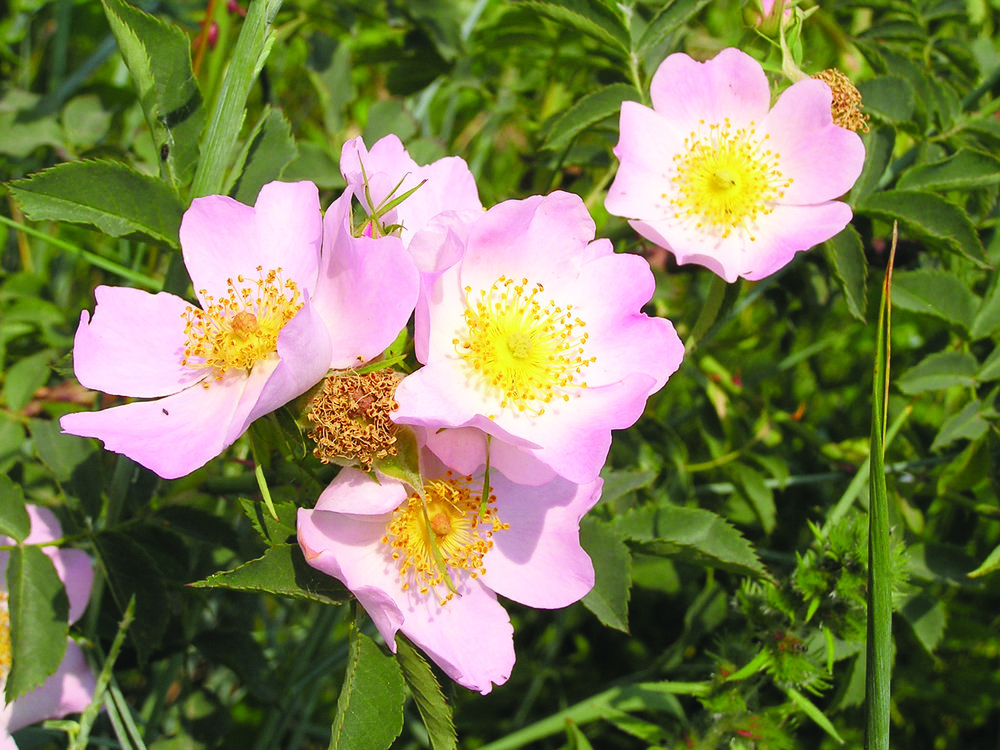Botanical secrets of Rosa canina

Rosa canina, commonly known as wild rose, is native to Europe, Northwest Africa and Western Asia. Other common names are Wild rose, Heprose, Canker flower, Wild briar, Pig rose, and Horse bramble.
It is a small, bushy shrub up to 3 meters, possessing dentate, oval-shaped, acute, and stipulate leaves with 5-7 leaflets. Pink to white flowers grow individually or within integrated corymbs. After ripening, the red to orange pitcher-shaped receptacle (hip), below the falling petals, contains red fibers covering the achene fruits.
Uses
Hips, fruits, and petals, which are a plentiful source of naturally-occurring vitamin C, are consumed in teas, soups, syrups, jam, tea flavorings and used in distillates and perfumes.
Ingredients
Fresh Hips contain a 0.5 to 1.7% combination of ascorbic acid (vitamin C as an antiscorbutic, dietary supplement and lipoxygenase inhibitor), hydroascorbic acid, vitamins A1, B1, B2, B3, K (antibleeding), and pectin 11% (laxative). Its fruits contain 2% to 3% tannins (analgesic, anti-diarrhea, and anthelmintic). However, malic and citric acids (laxative), flavonoids (anti-oxidant polyphenols), and especially carotenoids, vanillin, essential oils, sugars, and purgative glycosides like multiflorin A and B (potent inhibitor of glucose absorption) are predominantly found in petals.
Functions
Wild rose is used in the treatment of stomach ailments (spasms, acid deficiency, irritation, and ulcers) and is consumed as a "stomach tonic" for intestinal diseases. It has remedial effects on gallstones, gallbladder ailments, kidney disorders, fluid retention (dropsy or edema), gout, back and leg pain (sciatica), diabetes, high cholesterol, weight loss, high blood pressure, chest ailments, fever, increased immunity during exhaustion, increased urine flow, and improved hydration.
Recipe
Add 1-3 tablespoons of chopped fruit to boiling water, leave for 15-20 minutes, and filter before drinking. This can be repeated up to three times per day (12g max depending on body weight).
Toxicity
Prolonged exposure to villous fruits may cause respiratory problems and skin irritation.
Leave a Comment